paddlesteamers.info : The Internet's leading website for
Side-Wheeled Paddle Steamers
Caledonia (1934)

Above: Caledonia on 5th August 1967. Photo by kind courtesy of David Perry
Launched on
February 1st, 1934 by Wm Denny & Bros Ltd at Dumbarton,
Scotland
Engines : Triple Expansion diagonal : 20, 30.5 and 50 in x 60 in
Dimensions : 223 ft 6 in x 30 ft 1 in
624 Gross Registered Tons
Built for Caledonian
Steam Packet Company Ltd
Featured concealed paddle-boxes and linked observation decks above
fore and aft deck shelters
Served as a minesweeper named HMS Goatfell during the Second World
War
Was
patrolling alongside quasi-sister Mercury off the south coast of
Ireland when Mercury hit a mine but sank under tow by
Caledonia/Goatfell on December 26th 1941
Converted to an anti-aircraft ship stationed on the east coast.
Participated briefly in the D-Day landings in June 1944, sailing to Omaha Beach on day five of the operations
Later
she was stationed at Portsmouth defending the city against missile
attack and nearer the end of the war became an escort vessel around
Amsterdam in the Netherlands
Once decommissioned she returned to
the Clyde and served on a wide variety of routes, primarily ferry
sailings in the upper Firth, but
also assigned to cruising out of Ayr from 1954 until 1964.
Converted to oil-burning for the 1955 season. Radar fitted in
1959.
Replaced PS Jeanie Deans at the Craigendoran station in 1965 and
undertook more cruise work
Sold for scrapping after the 1969 season, but Arnott, Young, having renamed
her Old Caledonia looked for another buyer as an alternative to
scrapping her
Resold to the
brewing company Bass-Charrington. Left Greenock under tow on 2nd January 1972
Retaining the name Old Caledonia, she served as a floating pub moored on the
Embankment, central London, arriving on 23rd April 1972
Badly damaged by fire on 27th April 1980
Found not
to be worth repair and scrapped at Sittingbourne.
Engines preserved at the "Hollycombe Steam in the Country" adventure park at Iron Hill,
Liphook, Hampshire
Analysis
Caledonia's appearance in 1934 along with her
near-sister Mercury caused considerable interest and, amongst paddler
purists, considerable dismay on acount of her unusual, but thoroughly
modern appearance. Whilst the LNER's new Jeanie Deans of 1931 looked
not dissimilar to existing paddlers, Caledonia featured a large
elliptical funnel, deck shelters fore and aft connected to provide an
extensive promenade deck, and paddleboxes without the traditional vents, which
when seen broadside on from a distance, appeared to conceal her true
propulsion method. The latter was really more of an adoption of the modern "art-deco" styling popular at the time.
It had been 31 years since the last Caledonian paddler had entered
service, and although they had not added any turbine steamers to
their first such vessel (Duchess of Argyll of 1906) until 1930,
continued adherence to paddle propulsion was mot entirely surprising.
Caledonia was not designed for the long hauls to Campbeltown and
Inveraray - railway connections to Dunoon and Rothesay would be the
staple, and sufficient deck space for the carriage of barrows and
small cargoes would be needed. The relatively short distances between
piers meant that a paddler's quick acceleration and deceleration gave
it an edge over the more expensive turbine steamer
The early 1950s saw
car ferries introduced to provide an increasingly necessary service
on the main routes across the Firth. Paddlers were increasingly
relegated to relief duties, but this remained a vital role due to the
poor capacity and turnaround times of the car ferries in peak
periods.
Her excellent covered accommodation, plus a reasonable turn of speed
(over 17 knots on trial and 14 knots in service), made her an ideal
cruise ship and even in pre-war days she was employed cruising to
Arran via the Kyles. The car ferry revolution meant that Caledonia
was posted to Ayr in 1954 as excursion steamer for this popular
holiday resort, which also entailed periodic relief sailings from
Ardrossan to Arran. In 1965 she moved up-Firth to Craigendoran, to
replace the withdrawn Jeanie Deans, cruising round Bute out of the
former LNER stronghold for a further 5 years until the disastrous
economics of Clyde cruising signalled the end.
World War II activities
She
started off in the 11th minesweeper flotilla but was an anti-aircraft
vessel from 1942. In May 1940 the 11th was sent from the Clyde to
Harwich to cover for the Essex-based flotilla which was called to
Dunkirk. They only got as far as Dover by the end of the operation, so
then went to Milford Haven instead of Harwich. It was X-mas day 1940
that Goatfell as part of the 11th was present when her sister ship
Mercury was sunk by a mine and sank under tow back to Milford haven.
The Clyde steamers still in the 11th went to London in 1942 and were
converted to AA ships. When under conversion, Clyde fleetmate Juno was
sunk in an air raid, but Caledonia/Goatfell survived. The survivors
became utility vessels first at Hull, then Harwich. In advance of
D-Day, Caledonia/Goatfell was sent to Weymouth. She did not move until
D-Day + 5 to act as a communications ship and AA vessel. After three
days she was ordered back to the Solent to take shelter, whilst
flotilla mate Jupiter remained at the French coast. She then was used
to try and shoot down V1 rockets in the Solent. Once the Allied forces
had advanced sufficiently, Caledonia/Goatfell was sent to Antwerp which
was under heavy German bombardment, including V1 and V2s. She returned
to the Clyde on VE Day + 1.
Caledonia on the Clyde in photos

Above : Caledonia in 1951 by James Dobie (by kind courtesy of Gordon Provan)

Above : Caledonia arriving at Gourock in 1956 by James Dobie (by kind courtesy of Gordon Provan)

Above : A magnificent study of Caledonia in 1967 by kind courtesy of Jake Dale from his collection

Above : Caledonia at Rothesay in 1967 - courtesy of the Jake Dale collection

Above
: Caledonia passing through the Kyles of Bute near Tighnabruaich on 3rd
September 1968. Photo by kind courtesy of Willie Oswald

Above : Caledonia in 1969 - courtesy of the Jake Dale collection

Above : Caledonia at the Royal Navy Fleet Review in 1965. Photo by Ian Stewart
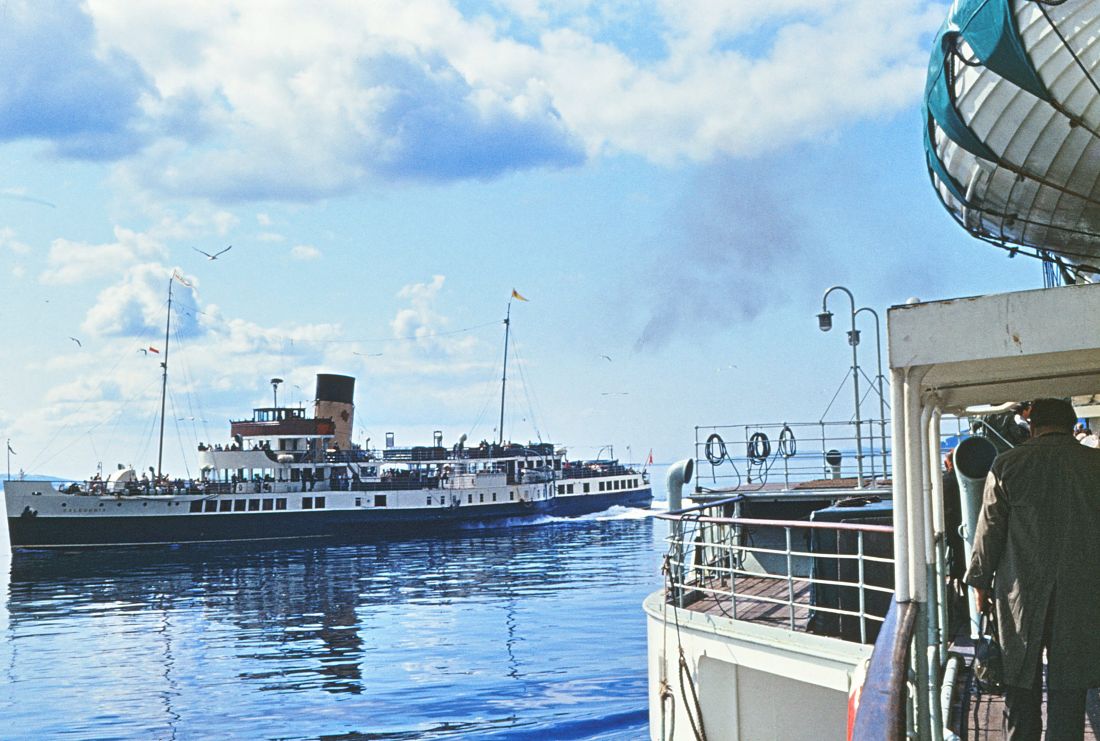
Above : Caledonia seen from Waverley in 1968. Photo by Ian Stewart : click here for more
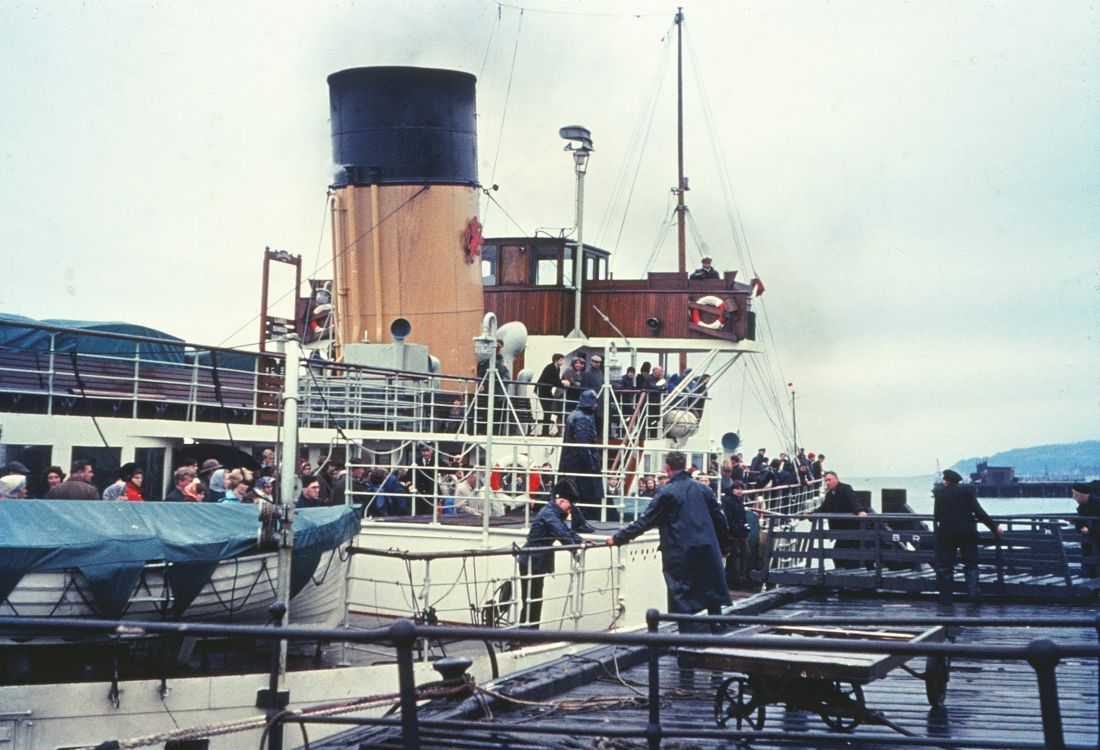
Above : Caledonia at Fairlie (this photo) and Brodick in 1969. Photos by Ian Stewart : Click here for more
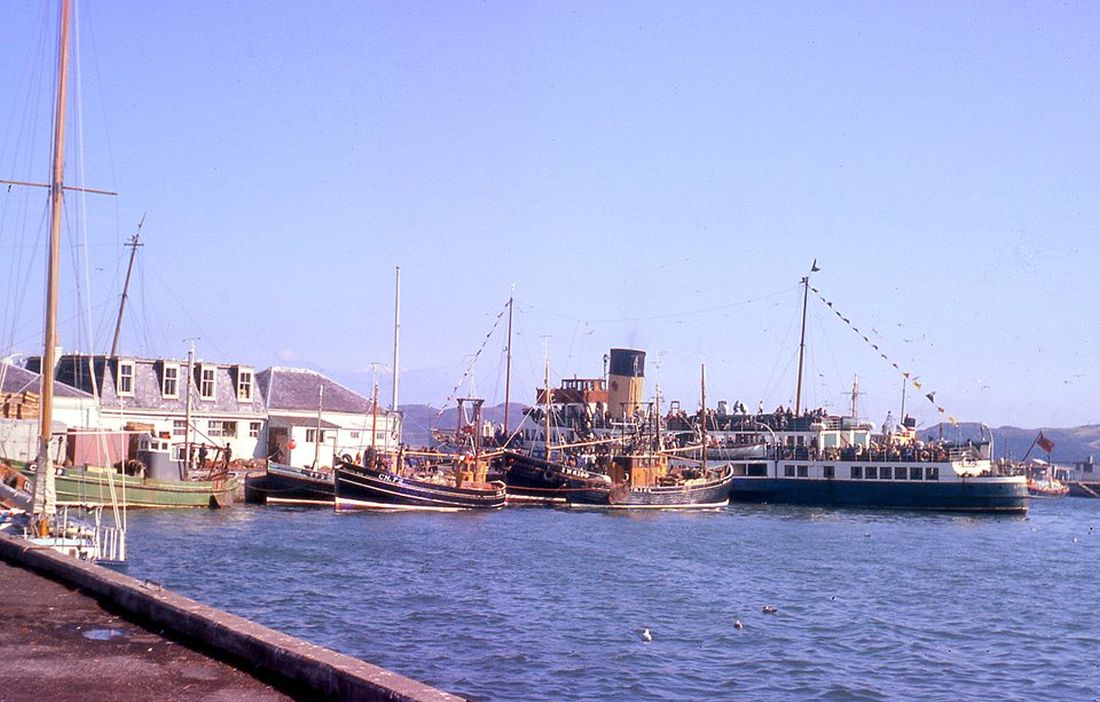
Above : Caledonia at Campbeltown. Photo by kind courtesy of Kenny Whyte
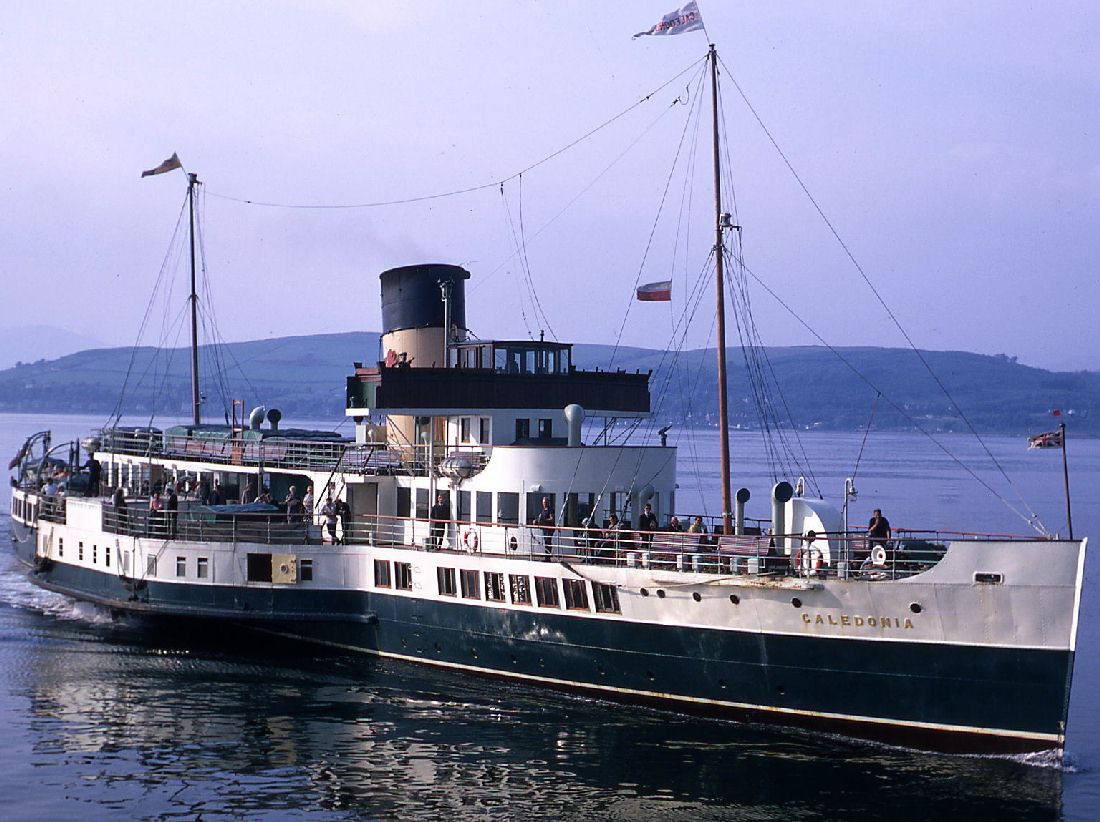
Above : Caledonia by kind courtesy of Kenny Whyte

Above : Caledonia in a view taken by David Owler, (courtesy of
Glenda Owler)

Above : Caledonia leaving Gourock in 1969 by kind courtesy of Kenneth Chalmers

Above : Caledonia approaching Dunoon in June 1968. Photo by kind courtesy of Stephen Dalziel, from his collection

Above : Caledonia approaching Rothesay. Photo by kind courtesy of Stephen Dalziel, from his collection

Above : Caledonia at Rothesay. Photo by kind courtesy of Stephen Dalziel, from his collection

Above : Caledonia at Rothesay. Photo by kind courtesy of Stephen Dalziel, from his collection

Above : Caledonia off Farland Point. Photo by kind courtesy of Stephen Dalziel, from his collection

Above : Caledonia off Rothesay. Photo by kind courtesy of Stephen Dalziel, from his collection
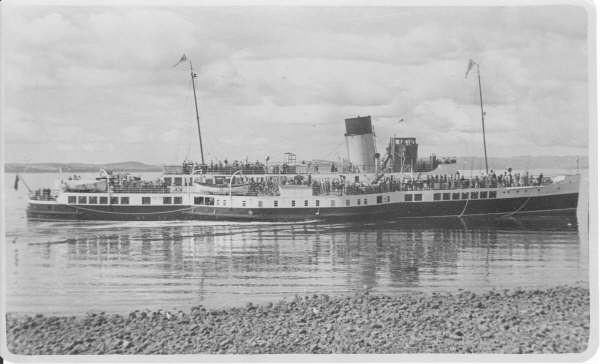
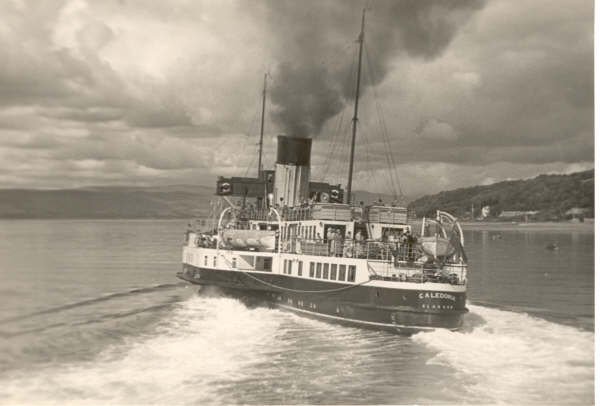
Above : Two views of Caledonia in the mid
1950s by Jimmy Reid (courtesy of Ronnie McLeod)

Above : Caledonia as she appeared
in her final years. Photo taken at Rothesay by Alexander Bain (supplied by
kind courtesy of Donald Bain)
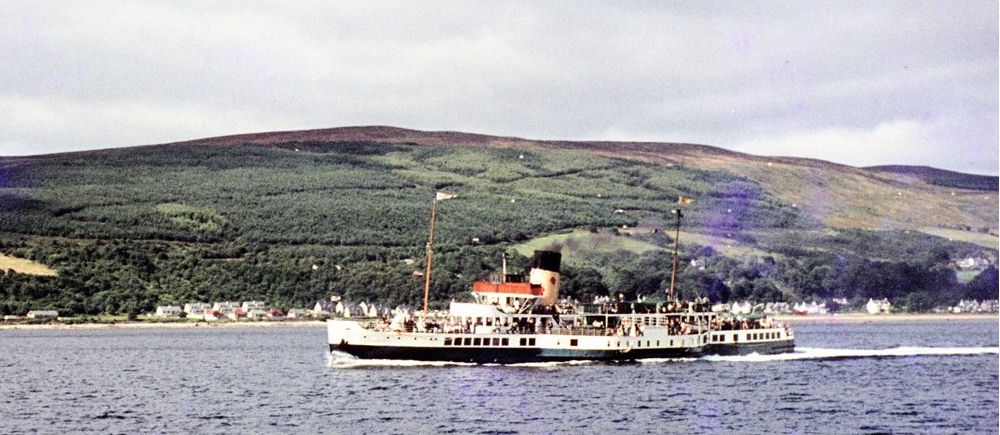
Above : Not long to go ................... Caledonia on 3rd September
in
her final season, 1969, in a photo kindly supplied
by Nigel Lawrence
At the beginning of October, Caledonia made
a few runs to Tarbet with the mails, a service which the CSP took
over from MacBraynes on October 1st. These were the last runs she
made for the CSP before being sold for scrapping - whilst local
enthusiasts and, to be fair, her new owners deserately sought a
buyer who would find a new use for the old ship.
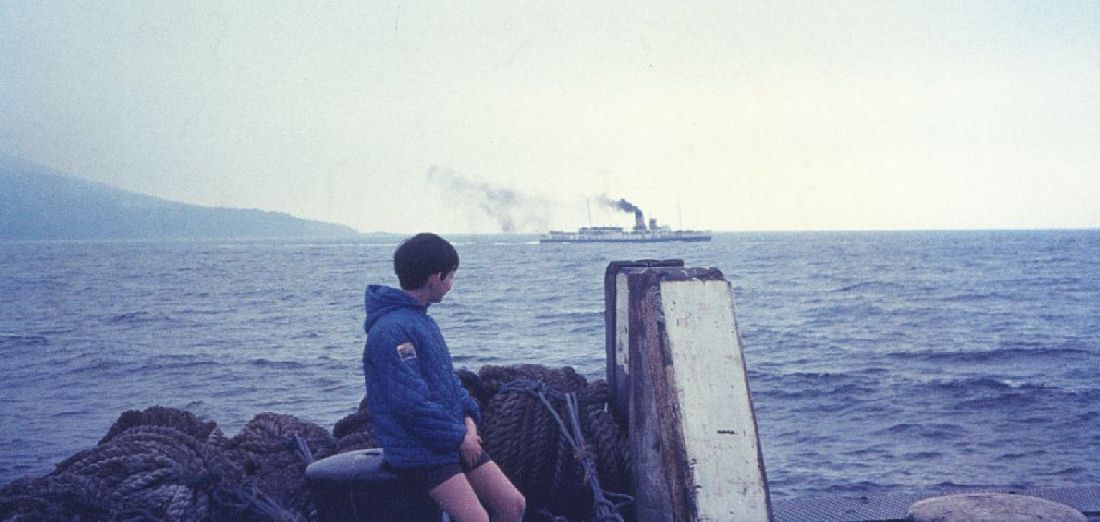
Brodick 1969 : The webmaster, having disembarked from PS Caledonia,
watches the paddler steam out of Brodick Bay after what looked to
be and turned out to be the last trip aboard as the favourite paddler
was withdrawn at the end of the season.

Above
: Now renamed Old Caledonia by Arnott, Young scrap merchants at
Dalmuir, Caledonia was prepared for her sale to Bass-Charrington the
brewing and pub company
Members of the Scottish
Branch of the Paddle Steamer Preservation Society had been instrumental
in pursuading the demolition company to wait in case a buyer could be
found
Photo by kind courtesy of Robert McLuckie
Caledonia in London
Above : Photos taken in 1973 and 1974 by Gordon Stewart : Click on photo to expand
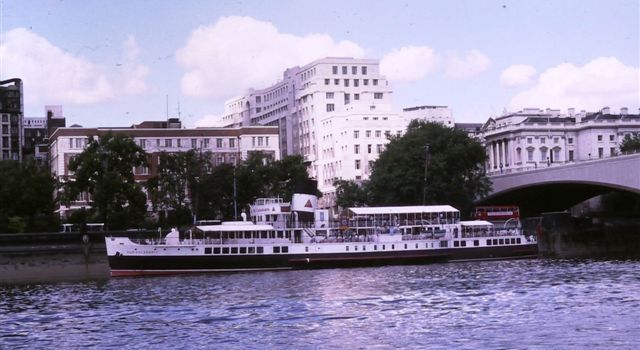
Above: Caledonia in
1977 : Photo by kind courtesy of Kevin Hoggett
Caledonia in preservation : Robert McLuckie took a tour of the ship
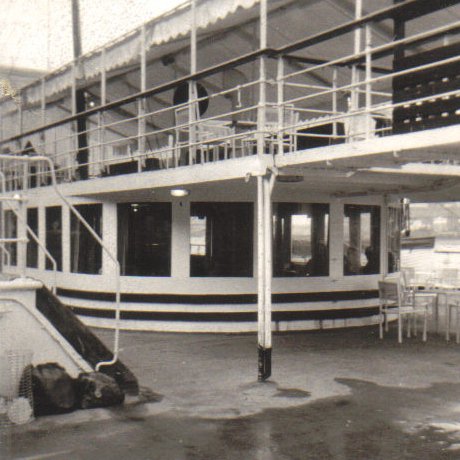
Click
here to have a detailed look around the decks of Caledonia whilst berthed in
London : Photos by kind courtesy of Robert McLuckie

Above : After the fire, Old Caledonia was towed for scrapping at Sittingbourne. Photo by kind courtesy of Robert McLuckie

Above : At Sittingbourne. Photo by kind courtesy of Robert McLuckie

Above
: A burned-out Old Caledonia in October 1980 awaiting demolition
at Sittingbourne, Kent. Photo by kind courtesy of John Hendy
Only the engines remain .......
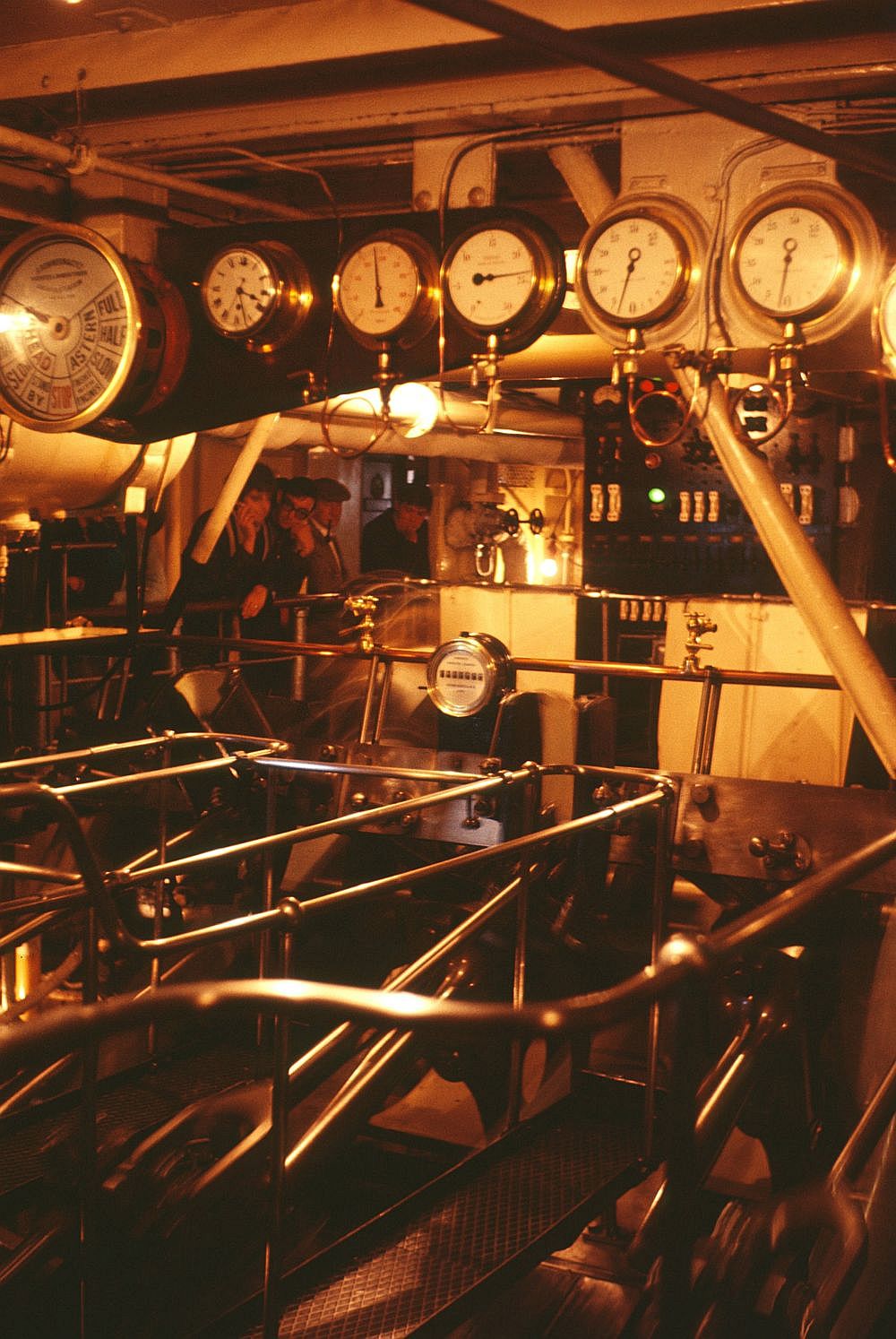
Above : Engine room in 1967. Photo by kind courtesy of David Perry
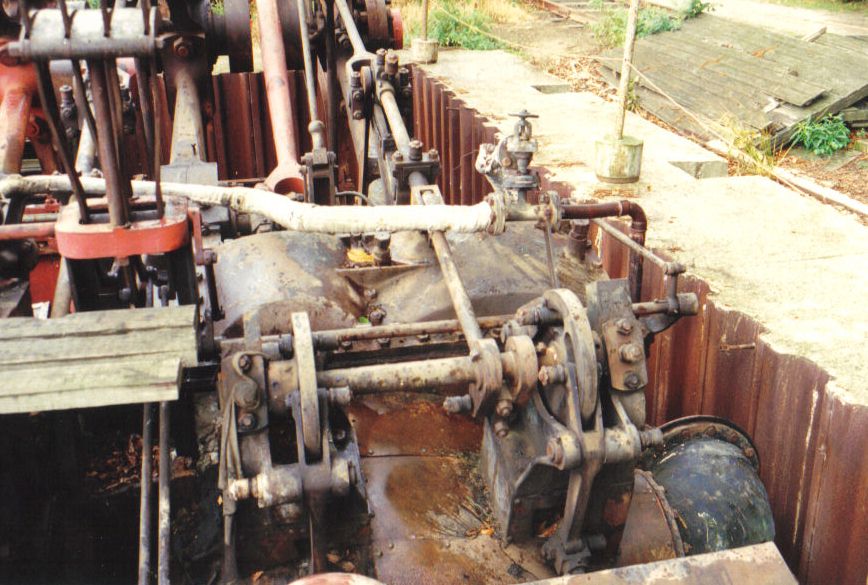
Caledonia's engines were saved and exhibited at the Hollycombe Steam Collection at Liphook,
Hampshire
Photo by kind courtesy of Robert McLuckie
Click here to see
more of Caledonia's engine at Liphook
Return
to :
Firth of Clyde
Caledonian Steam Packet Co
Clyde Steamers of the 1930s
Preserved Steam
Engines
British Paddle Steamer
Index
Clyde Steamers
Homepage
































